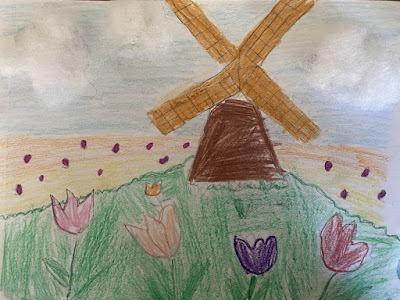Do you love books as much as I do? Even if you don’t, please
keep reading because this is the tale of tiny libraries connecting people all
over the world.
As I began typing this post I had the vague recollection
that I had written about little libraries before. Or had I merely intended to? I
scrolled back through older blog posts and realized that I posted about these libraries
more than seven years ago, and with only one photo. Clearly it is time for an
update.
Seven years ago I discovered a Little Free Library while
walking near my parents’ house. The tiny house had books inside and a number on
it. Enchanted, I threw on my Lois Lane hat and began digging online for the
story. I wondered how long these libraries existed, who started them, and how
many there were.
The Little Free Library program is a nonprofit designed to
give people access to books if they do not have a library near where they live.
Each Little Free Library has its own number, entered into a database, and
mapped for readers to use. This allows people to search for free books nearby. Here
is the link: https://littlefreelibrary.org/ourmap.
I have many photos of Little Free Libraries I have found
over the last seven years. I am not including them all, but here are a few
highlights:
 |
| We found this one by accident while in Port Elizabeth, Maine. |
 |
| Found on a twisty road in Glendale, near Los Angeles. |
The Little Free Library program began in 2009 when Tod Bol
of Wisconsin built a miniature library to share books with others. In 2012 the
nonprofit was established. There are more than 100,000 Little Free Libraries in
more than 100 countries around the world. I am delighted that this program is
so much larger than I would have guessed. There are building plans available
online if you want to create your own Little Free Library, and there are also mini
libraries not officially registered with the organization. The libraries are as
diverse as the books inside them: many have shingled roofs and real doors, but
some have an open air design. Some are colorful and decorated with mosaic or
paint, while others are more subdued. All are wonderful.
I am lucky to have a branch library less than a mile from home,
and one of the things I have missed during quarantine is the ability to check
out books. In the last week I have visited seven Little Free Libraries (the
furthest being three miles from our house). I took two books and left some that
my kids wanted to donate. For years I have taken photos of Little Free
Libraries, with the intention of blogging about them at some point.
My love of reading dates back to my early childhood. We
regularly visited our local library, as well as other library branches
throughout the city. There were free movies shown on actual film reels, there
were craft sessions, and of course, books. I still remember how the pages of
the books smelled like the Eucalyptus trees outside our local library. As a
child I was shy, and reading was a favorite pastime. Another of my hobbies was
playing with our dollhouse, which my parents bought from a man who had built it
for his daughter. After she outgrew it, it became ours. I loved the imaginary
world I could create in the dollhouse. Miniature foods, furniture and
accessories were enchanting. I think one reason I love Little Free Libraries is
because they look like dollhouses—filled with books—and are a nostalgic
connection to my childhood.
Some Little Free Libraries are made from upcycled bookcases,
wooden crates or other materials. I have seen phone booths repurposed into
Little Free Libraries. But many are handmade by book lovers, and some look like
a smaller version of the house behind them. Some are in parks or in commercial areas. I saw one in a
mall. But they all demonstrate a sharing attitude, and I love finding one by
accident.
The photos below are Little Free Libraries I have not seen
in person but which deserve a nod:
 |
| How imaginative is this mini library in Spokane, WA? |
 |
| In New York City. |
 |
| Modeled after the Oriental Theater in Milwaukee, WI. Such detail! |
 |
| Major charm in Salem, OR. |
 |
| Reading with "Rosie the Robot" in Horace, ND |
It’s been fun to share these delightful libraries with you.
Hope you enjoyed it, too!





























































